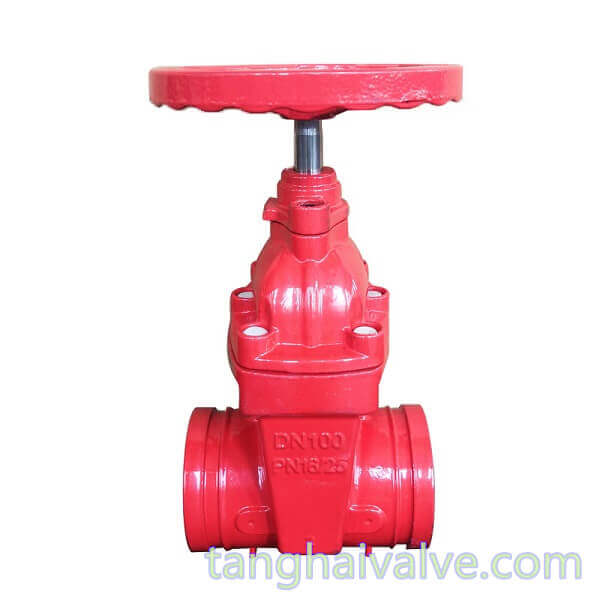Can a gate valve be used for oxygen as the medium?
If the soft-sealed gate valve you purchase will be used for oxygen media, the manufacturer will usually advise you not to do so, and inform you that it is prohibited to use gate valves in oxygen media pipelines in the specification. What

Grooved resilient seated BB NRS wedge gate valve (4)
is the reason for this requirement? In fact, this is mainly related to the movement of the gate valve. The opening and closing method of the gate valve is the vertical movement of the gate. The gate and the valve seat will have strong friction and sparks may be generated. Since the contact between the valve plate and the valve seat is not continuous, it is also Static electricity may occur, which is very dangerous when used in flammable and explosive oxygen media pipelines. Let’s analyze it in detail below.
According to the characteristics of the gate valve: the gate valve should not be used to adjust the flow and pressure, otherwise, the sealing surface will wear out quickly and the tightness will decrease.
Moreover, the gate valve cannot be slowly opened for pressure adjustment, so the gate valve is not suitable for oxygen pipelines. One of the reasons why gate valves are forbidden in peroxygen pipelines is that the sealing surface of the gate valve will fall off from the sealing surface due to friction due to relative movement. Although this seems so trivial to us in normal times, in an environment of high-pressure pure oxygen, these small particles of iron powder are very easy to reach the ignition point and burn, and bury potential safety hazards.
Here, there is one more thing to pay attention to, that is, the safety hazards of the oxygen pipeline are not all to blame on the gate valve. When the pressure difference between the two sides of the valve is large, an explosion accident will also occur. Judging from the lessons learned from the accident, banning the gate valve is actually prohibiting the production of combustibles, and the purpose is the same as the regular removal of rust, degreasing, and banning oil. The need to further control the flow rate, do a good job of static grounding and other measures to eliminate the source of ignition, it has a great relationship with the valve material. Although copper-based alloy gate valves are more effective than cast iron and cast steel gate valves in preventing the production of combustibles, this does not mean that there are no hidden safety hazards. The reason is that there is no control of the fire source, and it is impossible to focus on the safety of the gate valve without controlling the source. The attention to operating pressure and the meticulous maintenance of the entire pipeline at all stages must tighten the nerve of safety, not just considering whether a gate valve is used.
TH Valve is a professional manufacturer of butterfly valve, gate valve, check valve, globe valve, knife gate valve, ball valve with API, JIS, DIN standard, used in Oil, Gas, Marine industry, Water supply and drainage, fire fighting, shipbuilding, water treatment and other systems, with Nominal Diameter of DN50 to DN1200, NBR/EPDM/VITON, Certificates & Approvals: DNV-GL, Lloyds, DNV, BV, API, ABS, CCS. Standards: EN 593, API609, API6D
Related news/knowledge:
The role and classification of valves
Properties of Fixed ball valve
Design Features of Electric Gate Valve
Difference between Soft seal gate valve and hard seal gate valve



 © Copyright 2020 Tianjin Tanghaidongyang Valve Co., Ltd. All Rights Reserved.
© Copyright 2020 Tianjin Tanghaidongyang Valve Co., Ltd. All Rights Reserved.